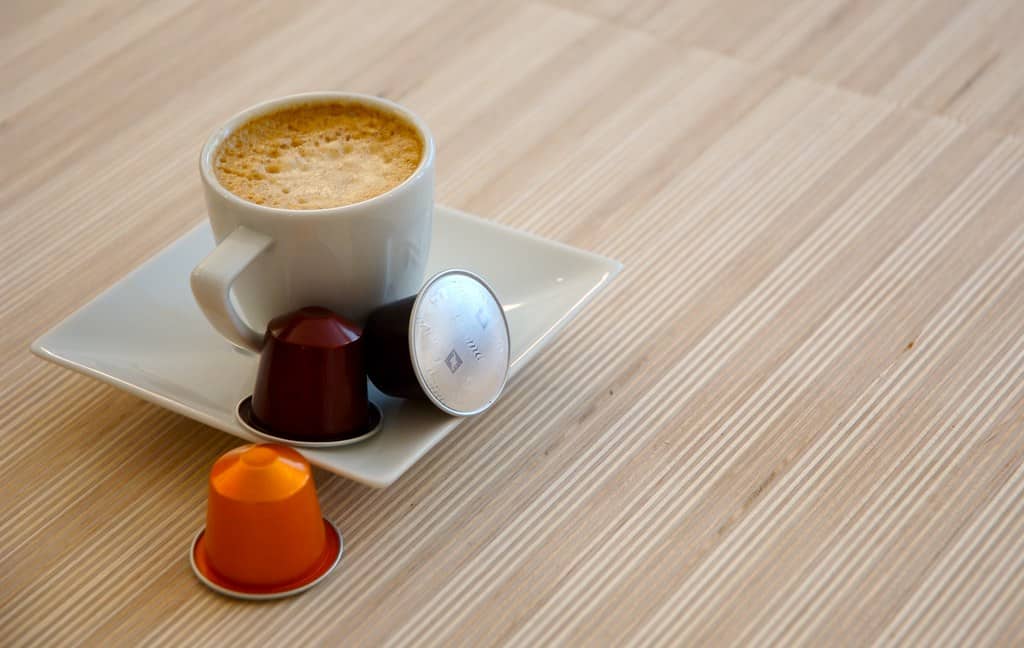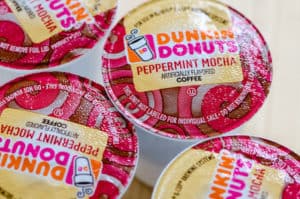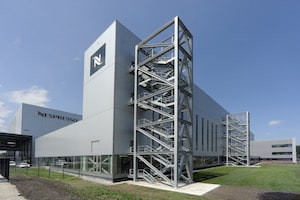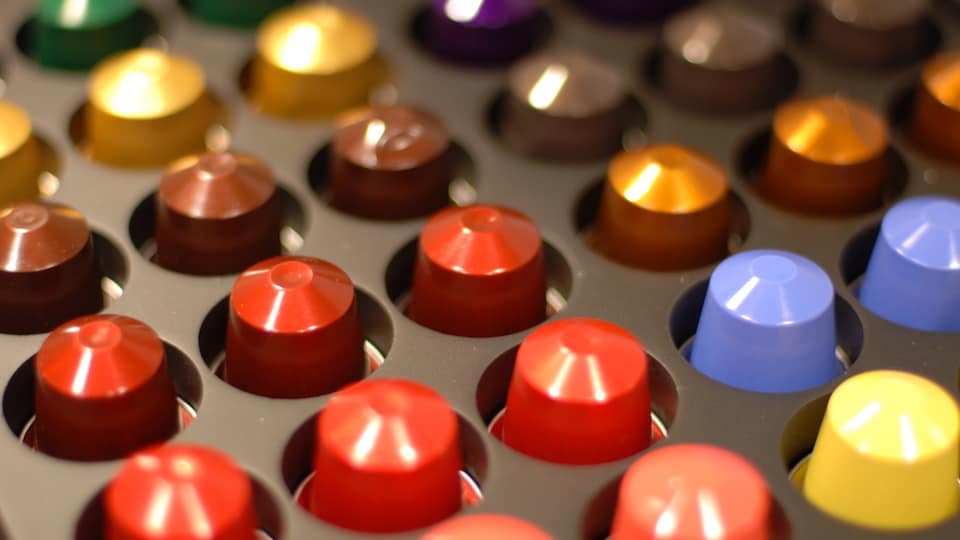Just so you know, as an Amazon Associate we earn from qualifying purchases made via bold red links, buttons or images.
Last Updated on December 15, 2023
The Nespresso vs Keurig decision is one that confronts most time-strapped coffee lovers at some point. If you’re the sort of person who needs to get up and go in the mornings, but you don’t have much giddyup before that first shot of caffeine, then fully automatic, single-serve coffee machines are for you. These brands are the front-runners.
Nespresso vs. Keurig
Nespresso focuses on espresso and espresso-related drinks. Keurig focuses on coffee. If you have a clear preference for one of those over the other, you can probably make your decision now.
But besides that one fundamental difference, there are also significant differences in cost, durability and brew quality that may impact your decision. I’ll go over those below, but first a little background…
Single-serve coffee machines: What they do and how they work
Single-serve coffee machines brew coffee from tiny sealed pods. Nespresso calls them capsules. In Keurig’s world, they’re called K-Cups. Whatever you call them, they’re a good way to store ground coffee because they protect the grounds from those notorious coffee killers, oxygen, light and moisture. Coffee in a pod stays fresh much longer than beans stored in a canister.

Nespresso and Keurig machines operate in a similar way. You drop the pod into a designated slot, and when you start the machine it punctures each end of the pod, then pumps hot water through it (and the coffee grounds) under pressure. Coffee comes out the other end and straight into your cup. It’s quick and easy. Both Nespresso and Keurig have built their brands on convenience and ease of use.
Capsule coffee makers can save you money
If your current habit involves visiting Starbucks or your neighbourhood café each morning and dropping $3 on your favourite caffeinated beverage, a Nespresso or Keurig will save you money over the course of a year. While they are cheaper than ordering over the counter, they are pricier than brewing your own coffee in a pot from ground beans.
Make no mistake, these companies make their money from selling you pods (usually online). Sure, a pod is cheaper than coffee at a café, but it’s much more expensive than a comparable portion of bulk coffee grounds. Heck, these companies could probably afford to give you the machines for free. They’d still come out way ahead just from filling your orders for more pods.
Because the real money is in pods, neither company wants their machines to be used with third-party capsules if the company isn’t getting a cut. They spend a lot of time in court over this.
History of the Nespresso and Keurig brands
Keurig and Nespresso launched their single-serve coffee makers in North America within a couple years of each other, around the turn of the century. Nespresso had been selling them in Europe since the mid-1980s.
Keurig has grabbed a much bigger share of the North American market—just over 60 per cent to Nespresso’s 10 per cent—thanks in large part to their partnerships with familiar American brands such as Starbucks and Dunkin Donuts. Their parent company also makes Dr. Pepper soda.
Nespresso belongs to Nestlé, a Swiss conglomerate, and specializes in espresso because of its European roots. Keurig doesn’t do espresso, although it did make a brief foray into the market with the Rivo R500 model launched in 2012. They discontinued it four years later.
Evolution of the Nespresso and Keurig product lines
Nespresso’s original line of machines (now called, appropriately, OriginalLine) focused only on espresso. In 2014 they launched the VertuoLine, which brews both espresso and coffee. The VertuoLine was aimed squarely at the North American market with its preference for larger servings, and the new line has helped the company make inroads.
Keurig launched an overhauled brewing system in 2015 after seeing a lot of its capsule sales bleed to third-party “bootleg” manufacturers who could easily produce capsules compatible with Keurig machines. This Keurig 2.0 brewing system requires Keurig-licensed pods. Licenced manufacturers get a barcode to put on their cups, and if the machine can’t read the barcode, it won’t brew. If you want a Keurig machine that is truly pod-agnostic, you’ll need to find one of the earlier Keurig machines on Amazon.
Keurig is more versatile than Nespresso—or is it?
People often say Nespresso vs Keurig is like Apple vs PC. With Nespresso, you can only drink the coffees that Nespresso provides, and the selection isn’t vast. It’s a little like choosing an Apple computer, which then dictates your choice of smartphone, tablet, streaming device, etc. Nespresso makes only four categories of capsules, in about two dozen flavours.

Nespresso machines do allow you some customization of your drinks with buttons that will add more or less water to the coffee. Many give you the opportunity to program the water volume to your preferences, and if you decide you’ve made a mistake then it’s fairly easy to reset a Nespresso machine to factory settings. Keurig partners with many other brands who are licenced to make K-Cups. These include the aforementioned Starbucks and Dunkin Donuts, but also brands like Celestial Seasonings, Maxwell House, McCafé, and many more. So the Keurig coffee universe is much more expansive. It even goes beyond coffee. Pods are available to make tea, hot cocoa, fruit cider, and Campbell’s soup. If variety is the spice of your life, you’ll get more of it from Keurig.
Keurig also offers variety in their machines—59 models at last count. Nespresso makes about six.
Keurig gives you more options for cup size, too. They offer the K-Cup, the larger K-Mug, and the K-Carafe, which is equivalent to four K-Cups. Keurig machines can produce cup sizes ranging from six ounces to 30. Nespresso’s original line of machines has only two buttons: one for a small espresso, and one for the slightly larger “lungo.” The default settings are 1.4 and 3.7 ounces, respectively, but you can change the settings. The newer VertuoLine will also produce an eight-ounce coffee (from a different pod).
Keurig water reservoirs are generally larger than those on Nespresso machines. Nespresso’s are in the 24-40 ounce range, while Keurig’s go all the way up to 80 ounces.
Keurig machines have a lot more programmable functionality than Nespresso’s, such as LCD displays, programmable clocks, temperature and brew strength controls. If you like lots of control over your brew, you’ll get it with Keurig.
But don’t run out the door to your nearest Keuring dealer just yet. One option that Keurig doesn’t provide—and it might be important to you—is the ability to brew espresso. Keurig’s discontinued Rivo R500 espresso machine is becoming scarce, so Keurig is now primarily for coffee rather than espresso.
Meanwhile, Nespresso’s VertuoLine offers Nespresso pods that can make coffee (and you could always make a good Americano with the original line), so the little bit of versatility that Nespresso can offer, which Keurig can’t, is the ability to make both coffee and espresso.
Is that important to you?
Durability
Nespresso makes more solid, durable machines than Keurig. They are built in Switzerland rather than China, using thicker plastic and more metal. They have a two-year warranty, which is twice as long as Keurig’s. Simply put, they have fewer issues.

This is partly owing to Nespresso’s manufacturing partnerships. They have licencing deals with well-known espresso-machine and appliance makers such as Breville, De’Longhi and Philips, which result in well-built machines that use Nespresso technology and bear the Nespresso brand alongside the other brand. These are reliable machines.
Cost
Keurig has the advantage here. Low-end Keurig machines start at $55, but it’s difficult to get into Nespresso for less than $90. Both brands’ regular lines top out at around $300.
K-Cups are also cheaper than Nespresso capsules. K-Cups range in cost from 35 cents per capsule to $2.25 for the high-end stuff. The Nespresso range is more like 75 cents to $1.40 (VertuoLine capsules are at the high end of that range, and OriginalLine capsules are cheaper). The folks over at Coffee Maven did the math, and if you drink daily, the savings from using K-Cups rather than Nespresso could be anywhere from $75 to $325 per year.
If you really want to save, you can find reusable pods for both types of machine. You pack them with grounds yourself and snap the lid in place before placing them in the machine. Nespresso’s newer VertuoLine has made it harder to game the system this way, but it’s still an option for OriginalLine machines. If you go this route, you’ll save money but you’ll also be sacrificing convenience. And you’ll be in charge of consistency—you have to get the grind right, and figure out how tightly to pack them.
Design
I give a decisive edge to Nespresso for design, while acknowledging that personal tastes differ. Nespresso makes great machines that are sleek, inobtrusive, and just a nice addition to any kitchen. They generally have a smaller footprint, which is great if you’re in an apartment or other small space.
I also note that Nespresso has a smart coffee maker, which Keurig does not. The Nespresso Prodigio connects to your smartphone via Bluetooth, allowing you to brew a cup or schedule a brew remotely using the Nespresso app. The app also tracks your supply of capsules, advises when it’s time to order more, and lets you do so with the click of a button. Pretty neat.
Nespresso offers a handheld, battery-operated milk frother called the Aerolatte with most models, and it works surprisingly well for topping off lattes and cappuccinos.
Ease of cleaning
Both Nespresso and Keurig machines are quite easy to clean. Simply wipe down the exterior with a soft cloth, detach removable parts such as the water reservoir to wash separately in the sink, and descale them every three to six months to remove calcium deposits.
Descaling your coffee maker
Descaling is the removal of mineral deposits inside the machine. Because the machines use water, and water carries minerals, trace amounts of these minerals will begin building up on the inside of your machine over time. Calcium is the big one. The deposits are called limescale and they aren’t toxic, but they will eventually affect the taste of your coffee and the performance of your machine.
To descale, you run an acidic solution through your machine. Both Nespresso and Keurig produce descaling solutions, but you could simply mix acetic acid (vinegar) or citric acid (available at winemaking shops) with water at a 2:3 ratio and it will do the job. https://www.youtube.com/watch?v=IjZkle3lDd8 One final word on cleaning—Nespresso machines automatically eject their used pods into a built-in waste receptacle after a brew, so you don’t need to fish them out with your fingers. All you have to do is recycle the Nespresso pods in the receptacle when it’s full. It’s a nice touch.
Sustainability of coffee capsules
Speaking of recycling, the sustainability of coffee pods has become a big issue and it’s one you should consider. The Atlantic drew attention to this problem with a 2015 article that said: “In 2014, enough K-Cups were sold that if placed end-to-end, they would circle the globe 10.5 times. Almost all of them ended up in landfills. They are not recyclable.“
They’re not wrong. K-Cups are a tightly packed combination of plastic body, aluminum top and paper filter. You can imagine how many people bother taking those apart and sorting them into the appropriate bins. That said, Keurig recognizes the problem and has set a goal of making their pods fully recyclable by 2020.
Nespresso capsules are aluminum, so they are recyclable but it has to be done right. To that end, Nespresso has set a sustainability goal of recycling 100 per cent of all capsules sold, and has begun developing infrastructure to make that happen. Nespresso users can take used Nespresso pods to collection centres at retail locations, collect them in a Nespresso recycling canister, or seal them in pre-paid recycling bags that the company provides and drop them off at any UPS outlet in the 48 continental states for delivery to Nespresso’s recycling facility.
Brew quality
A Nespresso drink, with its rich taste and soft layer of crema, would be considered a better coffee by almost any connoisseur. Few would dispute that.
“Basically it is like comparing cheap McD’s semi-fake meat burger (Keurig) to a high quality full beef angus burger at nice restaurant (Nespresso),” wrote one commenter at The Coffee Maven.
That might be a little harsh, but you get the idea. Of course, not everyone is a coffee connoisseur. Many people don’t like the rich taste of espresso, and that’s just fine. If you’re not fussy about your coffee or you just can’t taste the difference, there’s little point in spending the extra money for what somebody else considers a better cup of coffee.
So which is better, Nespresso or Keurig?
Deciding between Nespresso and Keurig usually comes down to a question of cost vs quality. Nespresso brews better coffee in a more durable machine, but the machine will cost you more at the outset, and the capsules will cost you more in the long term. If you have high standards for your coffee and can afford to pay a bit more, Nespresso is the way to go.
On the other hand, if you’ve never met a cup of coffee you didn’t like, why pay for premium when you could save that money and spend it elsewhere?
In closing, I’ll recommend three models from each brand which serve slightly different niches:
Best value for money
Nespresso Inissia
https://m.media-amazon.com/images/I/41ARgk-KylS._SL500_.jpg
The Nespresso Inissia is light and compact at just 12 centimetres wide. Its water tank holds almost three cups, and you can use its programmable volume buttons to dictate the amount of water per brew. Only 25 seconds to warm up, and another 25 to brew. You can upgrade to a bundle pack that includes the Aeroccino milk frother. Check availability
Keurig K-Classic
https://m.media-amazon.com/images/I/41zR9OmibVL.jpg The Keurig K-Classic is a huge seller. It offers all the quality of more expensive Keurig machines. It brews 6, 8 or 10-ounce cups from its 6-cup water reservoir, and does it in about 90 seconds from the moment you turn it on. Available in black or red, with a minimalist user interface. Check availability
Popular premium
Nespresso Pixie
https://m.media-amazon.com/images/I/41BtFuYGjtL.jpg The Nespresso Pixie made our list of best espresso machines under $300. It brews espressos or lungos with that beautiful trademark Nespresso crema on top. The reservoir holds three cups, and the machine needs about 30 seconds each for warmup and brew. The disposal receptacle holds up to 10 used capsules. The Pixie comes in many different colors and can also be bundled with the Aeroccino milk frother. Check availability
Keurig K-Elite
https://m.media-amazon.com/images/I/51RoAERzuJL.jpg The Keurig K Elite is Keurig’s top-of-the-line single-serve machine featuring a big 75-ounce water tank and five cup sizes: 4, 6, 8, 10 or 12-ounce. It comes set to brew at the right temperature, but allows you to choose a range between 187 and 192F. It also has specialized brew-strength settings for strong coffee and iced coffee. This one will take three minutes to heat up for the first cup. Check availability
Small and portable
Nespresso Essenza Mini
https://m.media-amazon.com/images/I/41LLVt0KulL._SL500_.jpg
The Nespresso Essenza Mini comes in two shapes: the slightly conical version by Breville and the rectangular version by De’Longhi (see our comparison). It is very small. The De’Longhi version is probably narrower than your cup, but it does the fundamentals just as well as bigger, more expensive Nespresso machines. It uses a 2.5-cup reservoir and takes only 30 seconds to heat up.
Check availability
Keurig K15
https://m.media-amazon.com/images/I/41Ip+NVEMuL.jpg
The Keurig K15 is also tiny—so small that it’s considered more of a portable travel machine than a home machine, but it’s great if you have a really small kitchen. There’s no reservoir—you fill it up each time you brew and it heats the water on the spot, so this can take a couple of minutes. Cup sizes are 6, 8 and 10-ounce, and they are the only way to control your brew strength.
Check availability
I wouldn’t expect the Nespresso vs Keurig battle to end any time soon. Both brands are going strong and doing what they must to grow their share of the market. In a fight like this, the winner is usually the coffee consumer.


